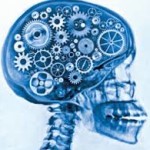Javascript, pop-ups and ad-blocking
“The ethics of modern web ad-blocking” – by Marco Arment
“The ethics of modern web ad-blocking
(…) Pop-up-blocking software boomed, and within a few years, every modern web browser blocked almost all pop-ups by default.
(…) People often argue that running ad-blocking software is violating an implied contract between the reader and the publisher: the publisher offers the page content to the reader for free, in exchange for the reader seeing the publisher’s ads. And that’s a nice, simple theory, but it’s a blurry line in reality.Continue reading→
Learning about our minds while teaching machines how to learn
Writing an algorithm requires a reflection of what steps, and their internal relations, are necessary to determine a desired output correctly. Such reflection exercise involving logical and abstraction considerations not only about the operations to be performed but also, in depth, studying how our mind process that same operations. A couple of recent articles explore that cyclical effort.
“Algorithms of the Mind – What Machine Learning Teaches Us About Ourselves” by Christopher Nguyen and “Are You a Thinking Thing? Why Debating Machine Consciousness Matters” by Alison E. Berman aproach interesting points of this case.Continue reading→
“Why Email Is Broken—and What Will Replace It” by PETER DIAMANDIS
“If you need to communicate something important to a friend, do you call? Visit? Email? Text? Skype? WhatsApp? Snap? Tweet? Message on Facebook or LinkedIn? (…)
As more and more tools become available, we seem to have accepted the notion that communication is “contextual”: LinkedIn is for work. Facebook is for friends. Snapchat is for close friends. Texting is for something immediate, if not urgent. Slack is for your team.Twitter is for public broadcast. Skype is for long distance. Phone calls are for intimacy or something really important.
And a lot of people make the mistake of thinking that email is, well, good enough.(…)
If the email is more than a few lines long, I don’t read it.
If I don’t get the point in the first couple of lines, I stop reading.Continue reading→
“Artificial Intelligence Is Already Weirdly Inhuman” by DAVID BERREBY
From Nautilus, Dark Matter issue via Azeem Azhar:
“…Artificial intelligence has been conquering hard problems at a relentless pace lately (…) neural network has equaled or even surpassed human beings at tasks like discovering new drugs, finding the best candidates for a job, and even driving a car.
(…) some hard problems make neural nets respond in ways that aren’t understandable.
(…) Not knowing how or why a machine did something strange leaves us unable to make sure it doesn’t happen again.
But the occasional unexpected weirdness of machine “thought” might also be a teaching moment for humanity. (…) they might show us how intelligence works outside the constraints of our species’ limitations. (…)” read full article
“The Neuron’s Secret Partner: Glial cells…” by FERRIS JABR
Article by Ferris Jabr, illustrated by Jackie Ferrentino, featured in Nautilus
“When we speak of brain cells we usually mean neurons: (…) The rest, known as neuroglia or simply glia, have long lived in the neuron’s shadow.
(…) By the early 1900s, that notion had begun to erode. (…) From the 1960s onward (…) neuroscientists confirmed that glia are the brain’s architects, doctors, police, janitors, and gardeners. In the last five years, researchers have finally brought glia into the limelight as the highly dynamic, incomparably versatile, and indispensable partners of the neuron. Here are five recently discovered roles glia play in the brain:
Wiring – (…) radial glial cells form a widespread lattice of cables along which neurons crawl like inchworms (…) A series of studies in the last three years have also confirmed that some glial cells excrete molecules that promote the formation of new connections between neurons, while others engulf and digest weak and underused synapses, changing the brain’s micro-circuitry throughout life.
Clearing Clutter – (…) Microglia roam about scavenging harmful tangles of proteins, the remains of dead cells, and bits of unneeded DNA. But a study published just last year indicated that microglia are essential for eliminating clumps of amyloid beta and other protein clusters associated with Alzheimer’s and related neurodegenerative disorders. (…)
Helping Neurons Talk – (…) oligodendrocyte precursor cell (OPC) is one of the most unique and active types of glia. (…) OPCs form synapses with neurons and change their own behavior (…)
Helping You Breathe – (…) When glia known as astrocytes detected a drop in blood pH, which would correspond to elevated levels of carbon dioxide, they increased (…) the breathing rate in live rats, eventually bringing more oxygen to the brain. Raising the pH, which would correlate with oxygenated blood, had the opposite effect. (…)
Making You Smart – By absorbing and releasing neurotransmitters, and thereby modifying the availability of these molecules, astrocytes change how frequently and forcefully neurons fire” read full story




